Home to one of the world’s most important salt deposits and priceless medieval architecture, Cardona is a town worth visiting and a great day trip from Barcelona.
The highlight of this city is undoubtedly the Salt Mountain, a geological wonder made almost entirely of this edible mineral. Another gem is the imposing medieval castle, with centuries of history lying behind its walls.
Discover how magical a salty world can be by walking through an old mining facility and get back in time by exploring Cardona’s medieval fortress. We’ll show here you everything you need to know to plan this adventure in Cardona, Spain.
* Post written for the first time in November 2017 and updated in April 2024.
Plan before you go
How do I get to Cardona?
Cardona is a town in Central Catalonia, about 90 km northwest of Barcelona.
The easiest way to get there is by car. It takes around one hour and a half to drive from Barcelona.
There’s also the option to go by bus from Barcelona. Several buses depart from Sants station and Estació del Nord in Barcelona daily. The journey takes around 2 hours and costs around 13€ one way (see the schedules and book tickets online).
When is the best time to visit Cardona?
You can visit Cardona all year round. However, we recommend avoiding July and August, as they can be very hot and crowded.
When planning your visit, consider that the Salt Mountain closes on Mondays. The guided tours of the castle don’t run on Mondays either, only from Tuesday to Sunday and on holidays.
What to do in Cardona
Visit the Salt Mountain Cultural Park
The Salt Mountain Cultural Park is a massive formation of mainly potassium, sodium and magnesium chloride. The mine stayed in function from 1929 to 1990 and closed. Seven years after closing it, they decided to open it to the public so people could know about the importance of this natural resource, its history, and the miners’ lives.
The only way to visit the mountain is with a one-hour guided tour, which costs 12.5 €/person (the regular guided visit).
When you arrive there, they drive you in 4×4 vehicles to the entrance of the galleries of the Mina Nieves (Snow Mine). Surprisingly, the 120-meter tall salt massif you see is only a tiny piece of the entire geological formation. In fact, the diapir goes nearly 2 km deep!
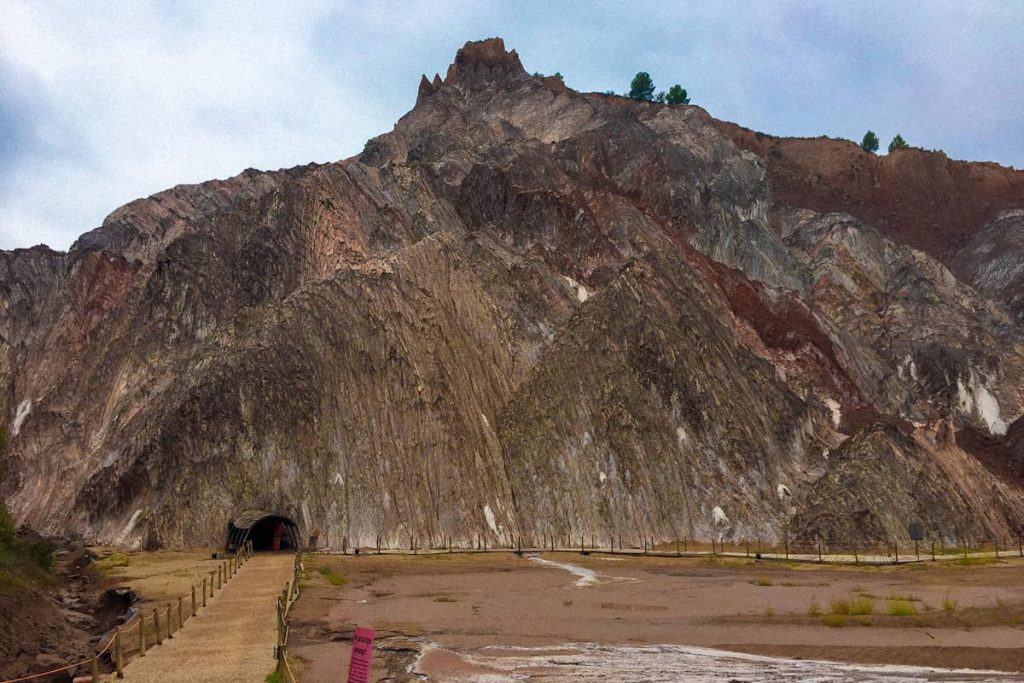
At the beginning of the visit, you are given safety equipment to wear. You’re then ready to explore 500 m of galleries situated 86 m underground!
When we entered the galleries, we were astonished. Inside what seems just a pile of salt, there’s a whole world to explore that you’d never imagine could exist. It’s surprising how nature can create such beautiful landscapes! The variety of colours and shapes makes a unique underground temple and an invisible world for those not curious enough to explore this place.
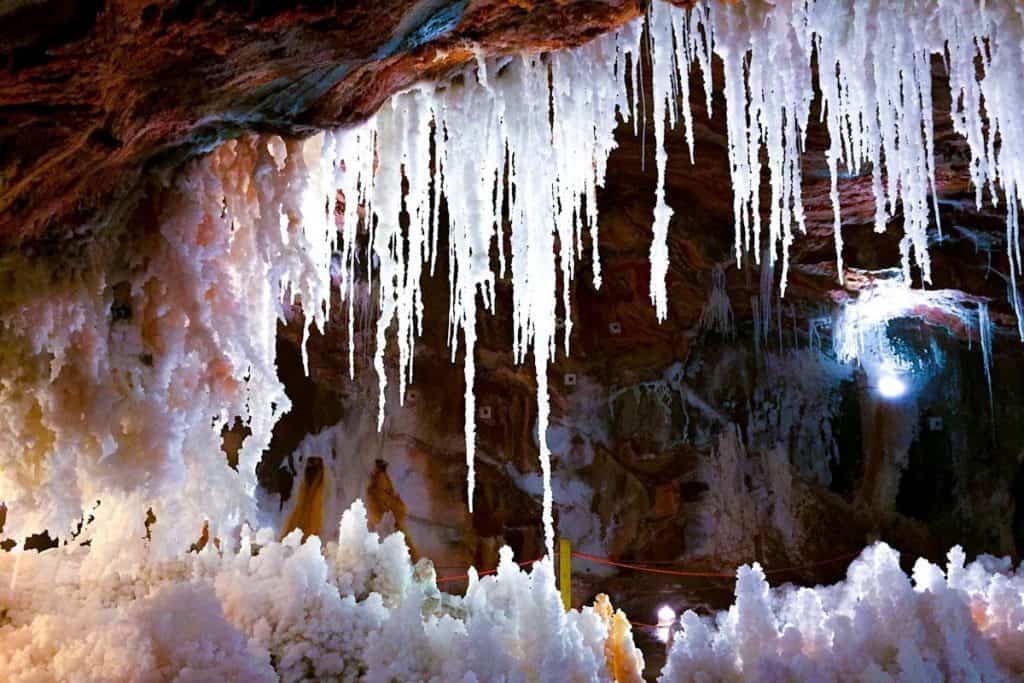
This place is worth a day trip from Barcelona as you get the chance to explore a curious geological phenomenon. The visit is suitable for everyone, no matter how young or old you are.
⚠️ Important!
Bear in mind that the visit is available only in Catalan and Spanish. Nonetheless, the Salt Mountain offers audio guides in English.
Explore Catalonia’s most important medieval castle
The famous castle of Cardona is undoubtedly the most important medieval fortress in Catalonia. It is located on a hill, offering beautiful views over Cardona, Salt Mountain, and the river valley of the Cardaner.
You can walk freely around the castle, but if you’re into history, we recommend you book a guided tour, which allows you to visit areas of the castle otherwise closed to the public. The tour lasts 1.5 hours and costs 8.5 €/person.
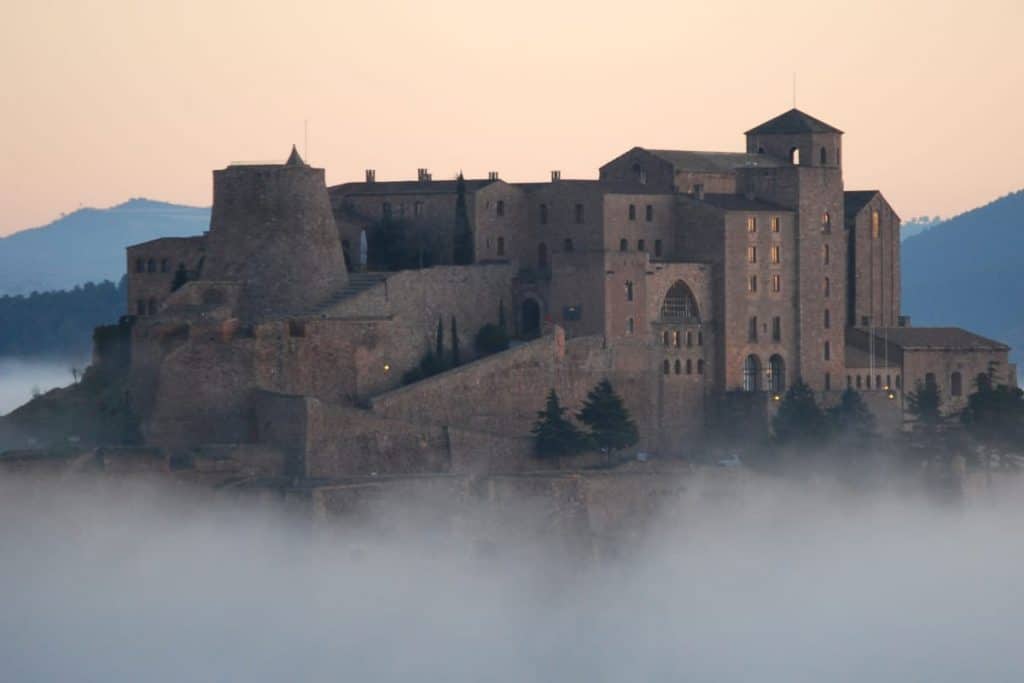
Where to eat in Cardona: Local restaurant recommendations
Cardona is a great one-day trip from Barcelona. When we were there, we visited the salt mountain in the morning and the castle in the afternoon.
As we had a car, we went to a small village near Cardona called El Miracle (The Miracle) for lunch. This charming village has a sanctuary turned into a restaurant that serves typical Catalan dishes. We love their setting and how they genuinely care about locally sourced products, fantastic customer service and delicious food!
We highly recommend you try their peus de porc amb cargols (pigs’ feet with snails) as the main course and the mel i mató (fresh cheese with honey) as a dessert.
If you prefer to stay in Cardona, we have a couple of recommendations for you on where to eat. Restaurant Cal Borrasca is a small restaurant serving traditional Catalan dishes with an innovative touch (it’s always better to book in advance). Another option is La Volta del Rector, a restaurant serving delicious Catalan food.
Are you a history fan? Let us tell you more about Cardona!
The history of the Cardona’s Salt Mountain
How is it possible to find a formation like the Salt Mountain in Cardona, which is far from the sea? To understand, we must go back 5.6 million years. By then, the Mediterranean Sea had separated from the Atlantic Ocean, and much of the water had evaporated.
As a result, a thick layer of salt appeared but was hidden below layers of clay and rock. Some million years later, tectonic activity pushed the layer of salt up to the surface, forming this salty mountain in Cardona.
So, the Salt Mountain is a rare example of how the marine environment can evolve into a terrestrial one.
The Salt Mountain is also an icon of Catalonia. It allows us to understand the history of Cardona as a mining city and study a natural phenomenon rarely seen.
The composition and concentration of the dissolved salts produce the different colours and textures of the diapir, giving us information about the order in which the rocks evaporated and deposited.
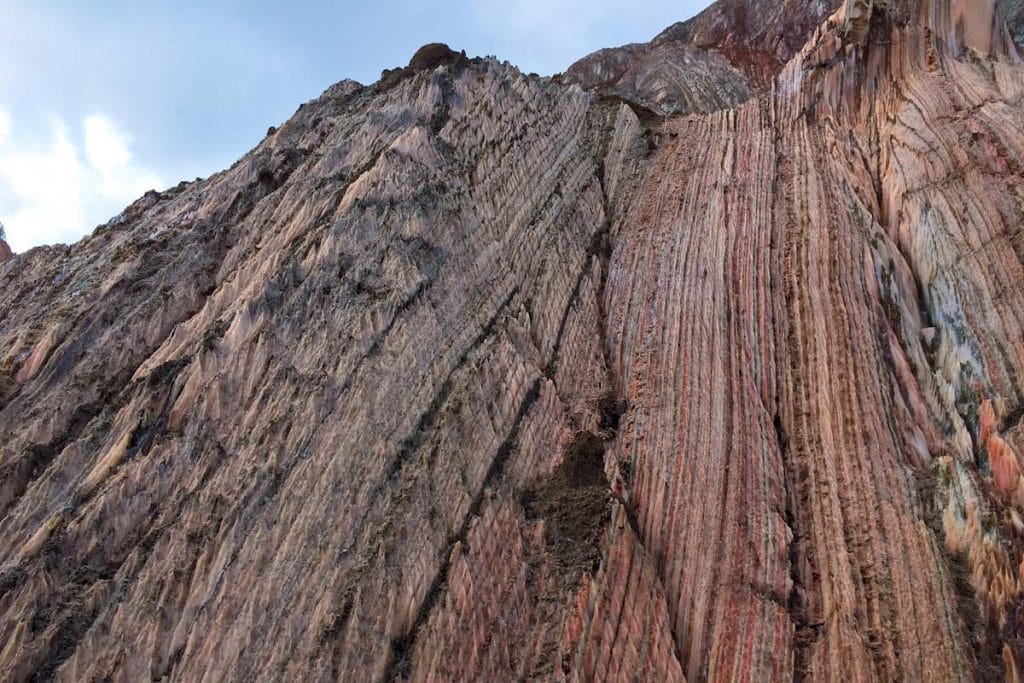
Mining activity gave Cardona its wealth during the Middle Ages. The Romans were the first to exploit salt in the area. Later, the diapir was exploited for potash salt, generating even more income for Cardona.
Years after, the council built a mine, and most Cardona citizens started working with salt in many different ways: as miners, bakers (making salty pastries), and salt sculptors. The impact of the mine on the culture of Cardona is still palpable today.
The history of Cardona’s castle
Cardona’s castle is another jewel of this town and a symbol of Catalan nationalism. This unbreachable fortress was strategically situated at the top of a hill so the noblemen could watch over the Salt Mountain, the white gold that rose Cardona’s economy.
Wilfred the Hairy ordered the castle’s construction in the 9th century, mixing the Gothic and Romanesque styles. During the 14th century, it was the residence of the dukes of Cardona, also known as “kings without crowns”. This was because they came from the most important family of the Crown of Aragon, which was second only to the royal house. They extended the castle and built a palace and the Romanesque church of Sant Vicenç.
In 1714, during the War of Spanish Succession, the fortress was the only one to resist the attacks of King Philip V.’s troops. Still, many of the castle walls were destroyed after the Bourbon siege.
Nowadays, the castle is a luxury parador with its legendary Minyona tower, a gothic cloister and the Ducal Courtyard.
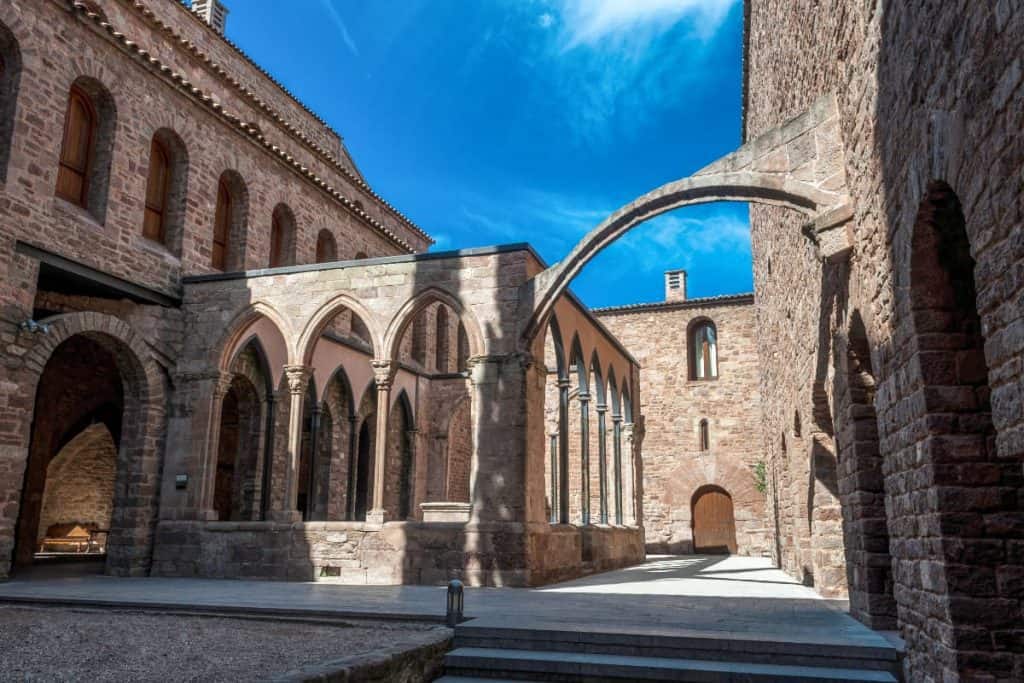
Where to sleep in Cardona
If you fancy spending a night in Cardona, there are many great accommodations that are not only hotels but also experiences themselves.
For starters, you can spend a night in the Parador de Cardona, the luxury hotel inside the 9th-century castle. Imagine eating breakfast under the castle’s vaulted ceilings or having dinner in the medieval dining room. Staying here is like being transported to the Middle Ages but with all the comforts of the 21st century.
Another amazing option is the Bremon Boutique Hotel, located in a historic 19th-century building that was a girls’ school.
Besides a castle and a school, you can also stay in a 17th-century farmhouse used to make olive oil! La Premsa Hotel Rural still features its olive oil press, which was used until 1980. The place has a rural and medieval feel, with stone walls, wooden furniture, and beautiful arches in the dining room.
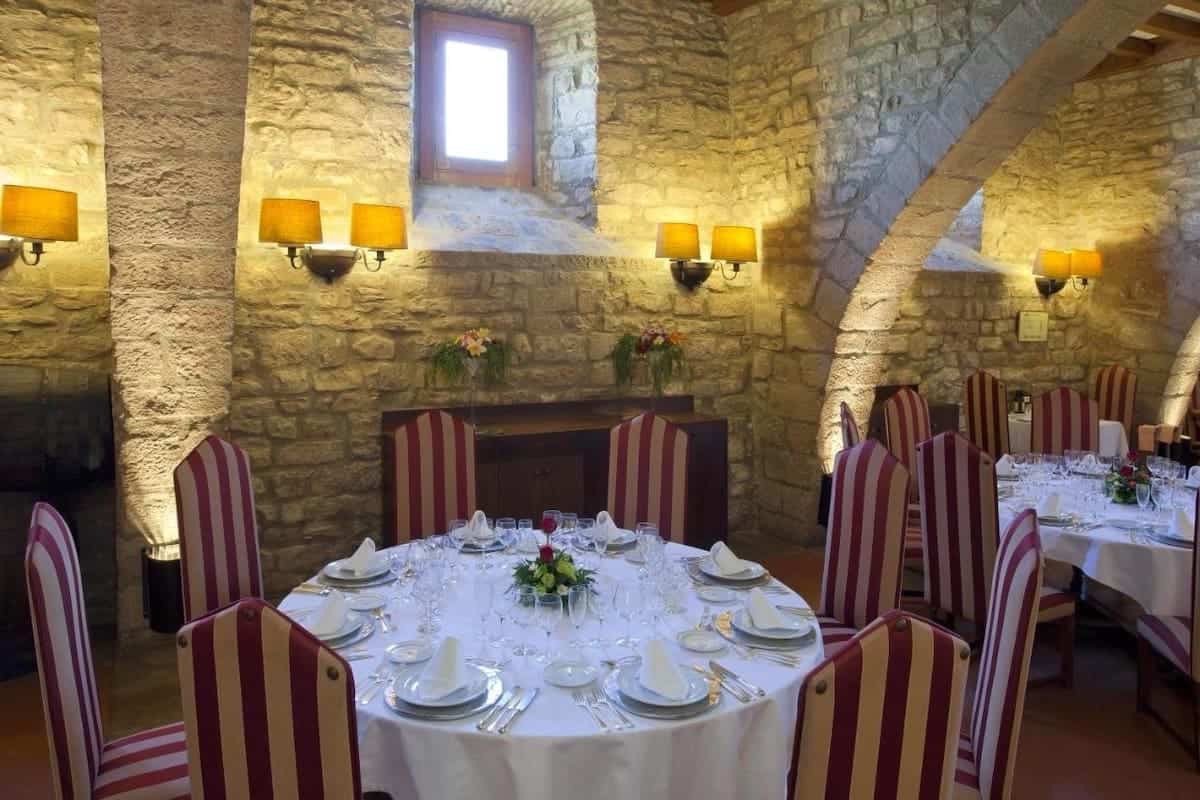
With its geological marvels and old-timey castle vibes, Cardona promises to be an unforgettable adventure. We hope this blog post helps you plan a great day trip or weekend there 🙂

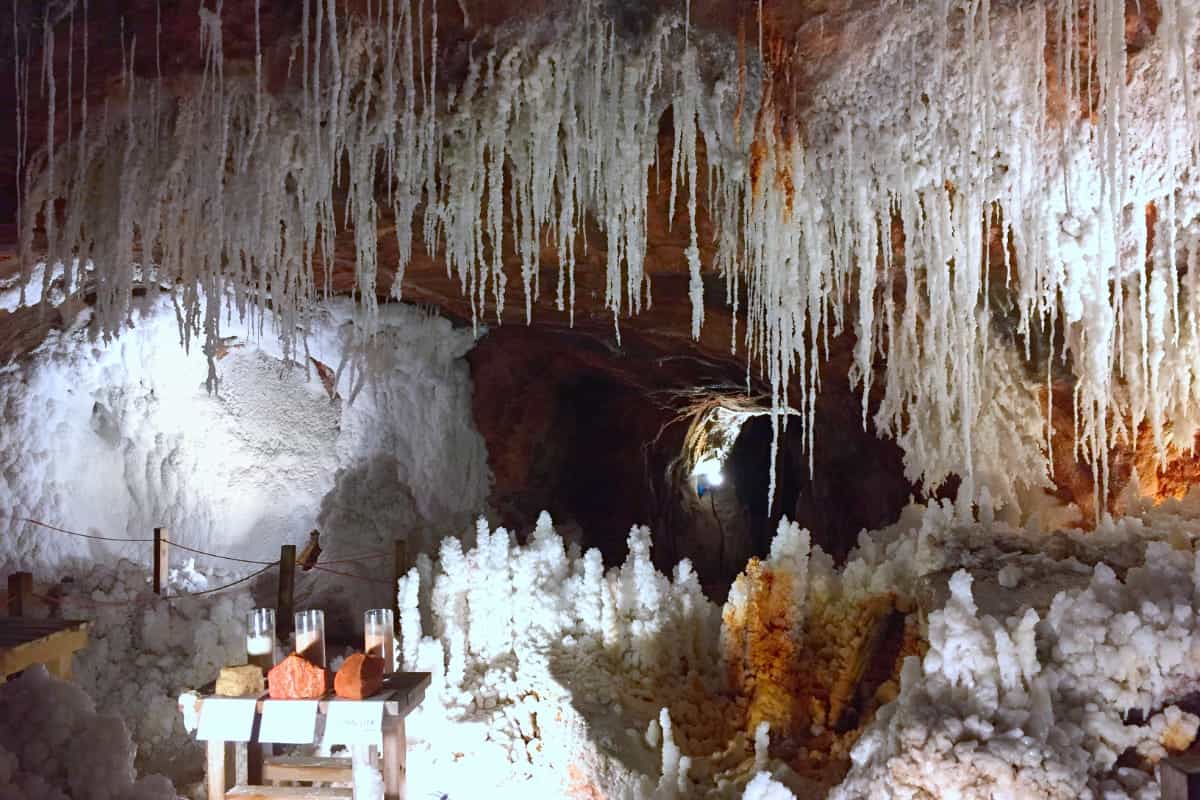
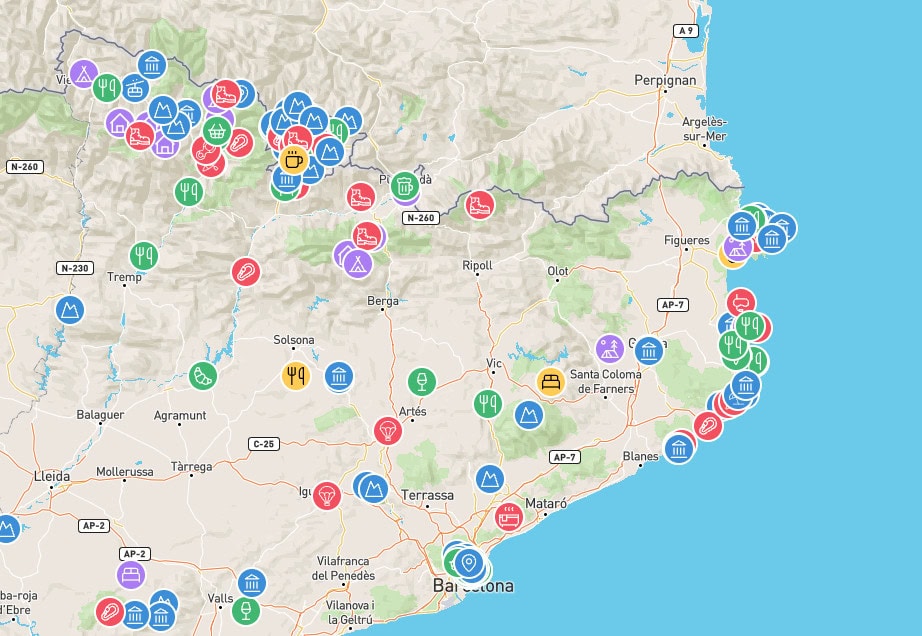
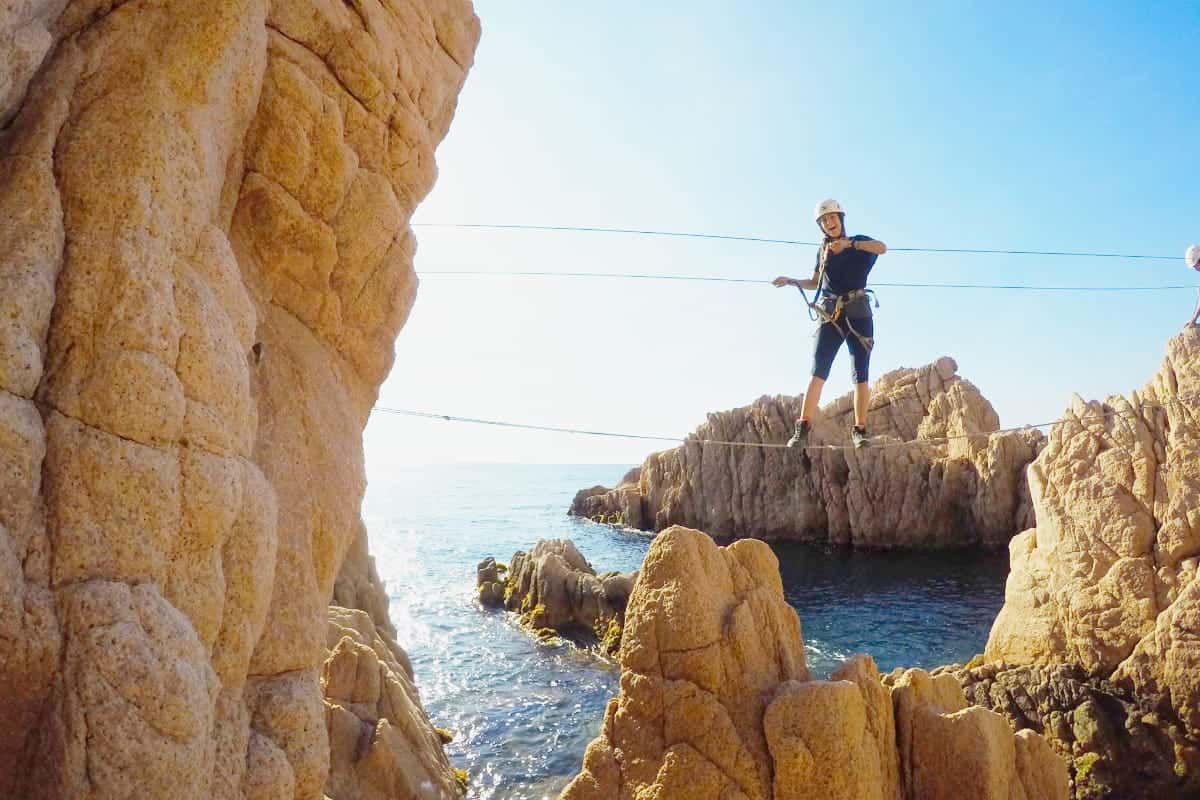
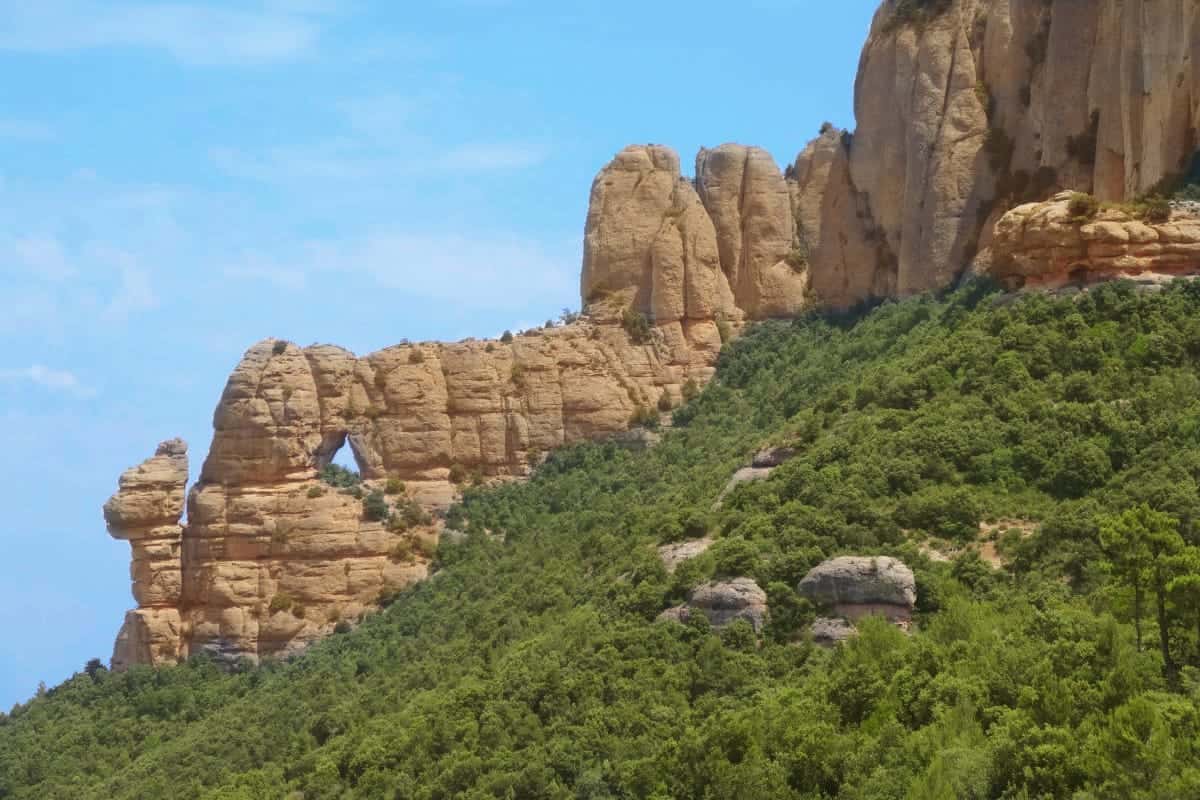
0 Comments